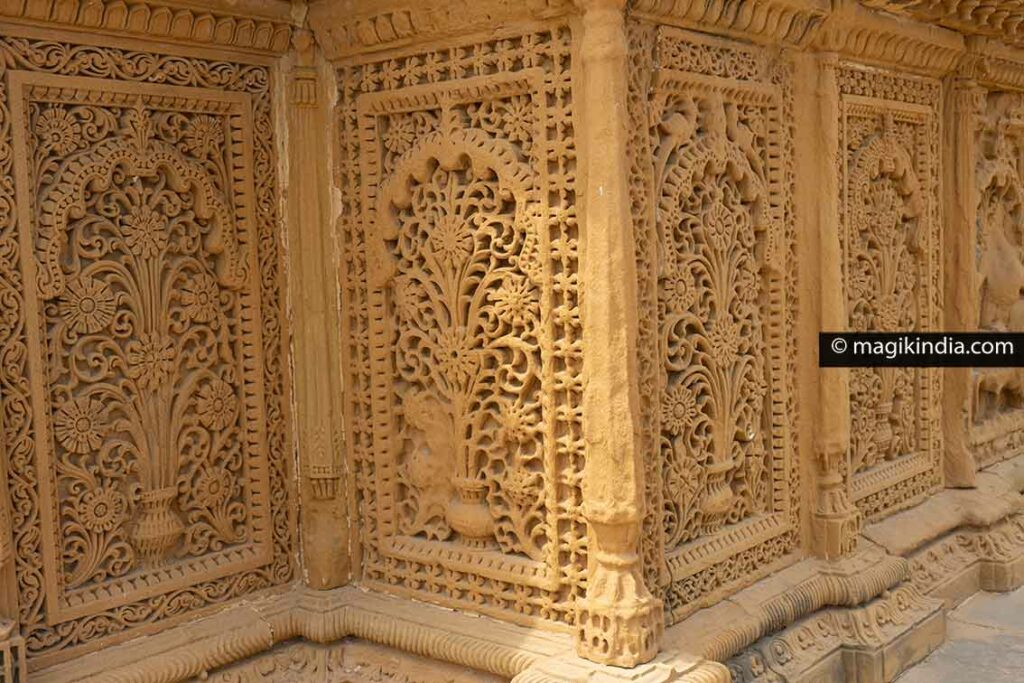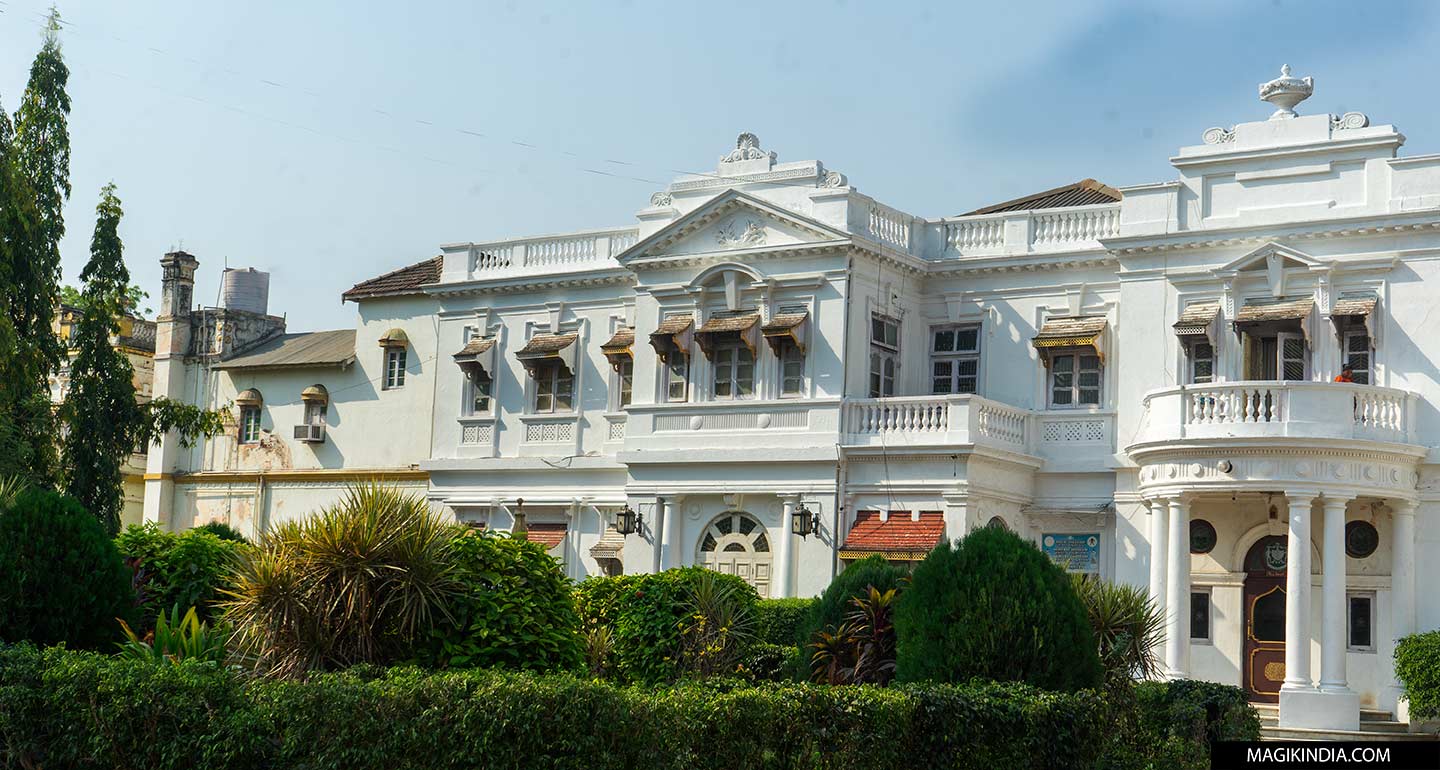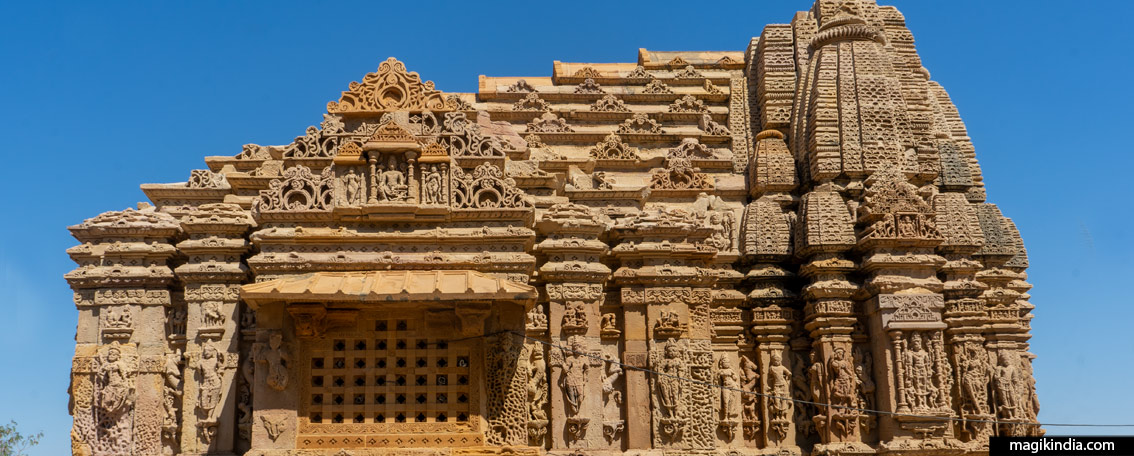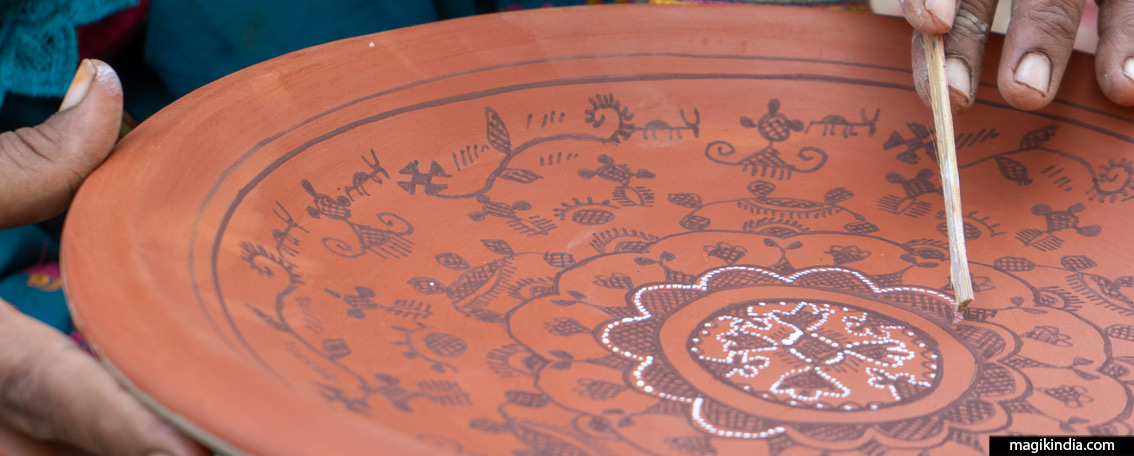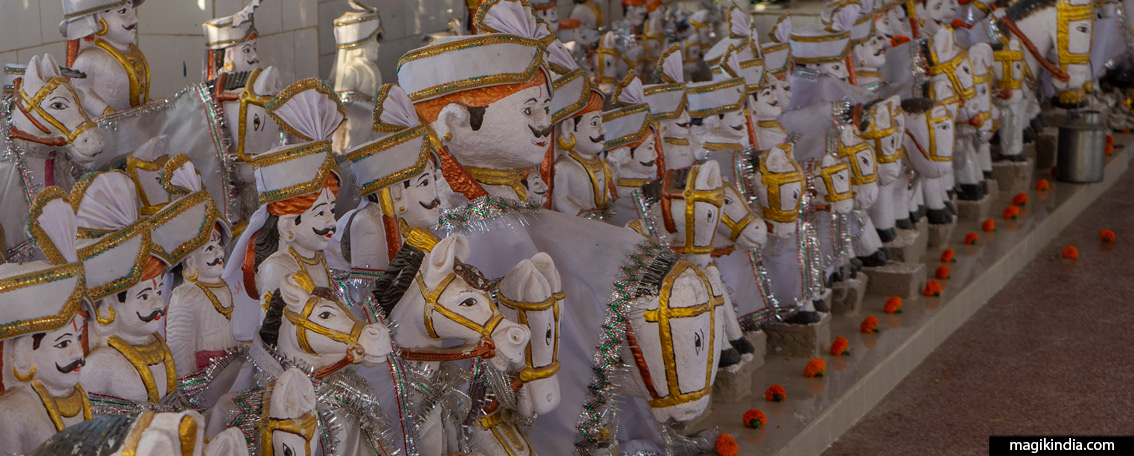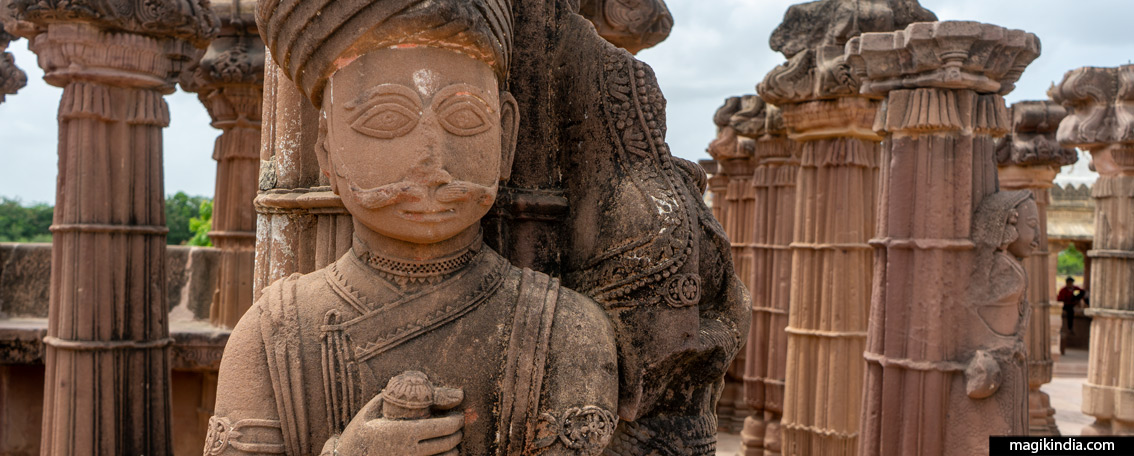
The Royal Chhatardis of the Jadejas of Bhuj
For some reason, some guides skip the Chhatardis of Bhuj. And, if we are poorly informed by the locals, we could miss these remarkable cenotaphs built in memory of the Maharaos Jadeja of the Kutch district, Gujarat.
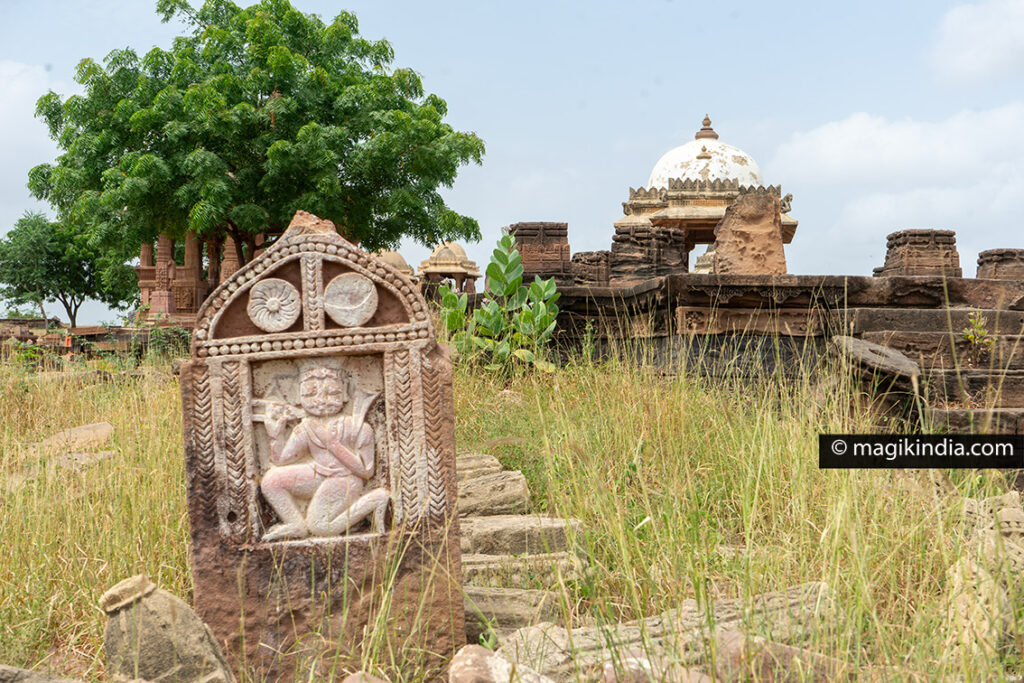
The chhatardis are located only 5 minutes as the crow flies from the temple of Swami Swaminarayan, one of the key places in Bhuj; it would therefore be a shame not to see such a site.
The site was heavily damaged during the 2001 earthquake. The remains of the cenotaphs nevertheless remain very interesting architecturally.

“Chhatardi” is the Gujarati version of “Chhatri”, which means “umbrella” in Hindi and refers to the shape of the cenotaph domes. The “umbrella” roofs that top pavilions are typical of Rajput architecture and have their origins in Rajasthan, one of Gujarat’s neighboring states.
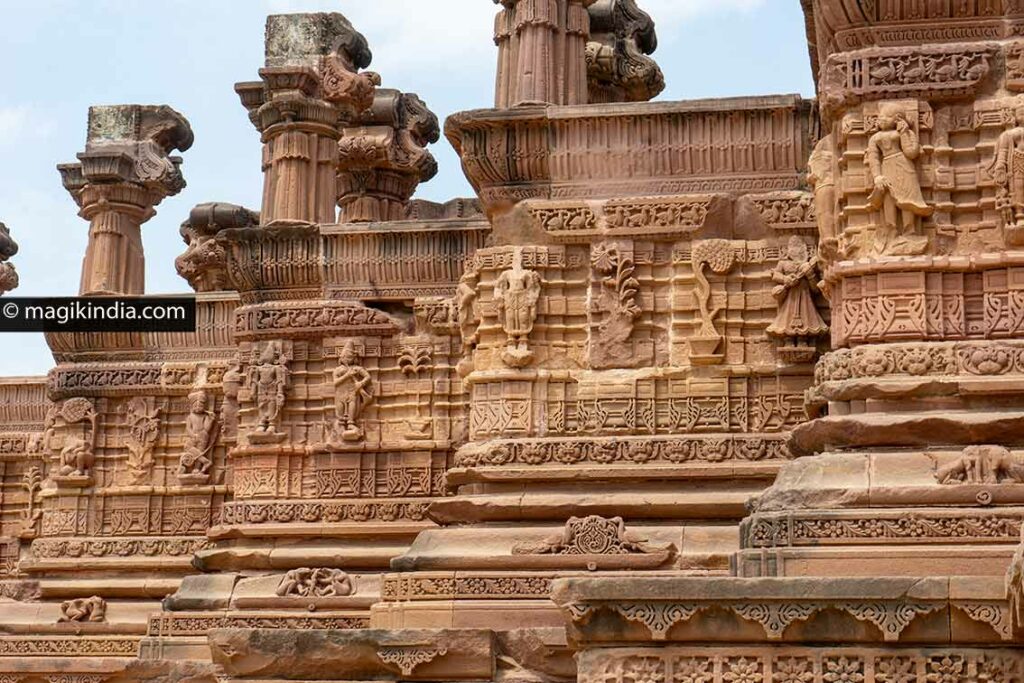
A cenotaph, unlike a mausoleum, is an empty tomb which is erected in memory of a dead person. The last funeral rites are performed at the site of chhatardis (cremation), but there is no burial of the ashes, they are scattered in sacred rivers like the Ganges.
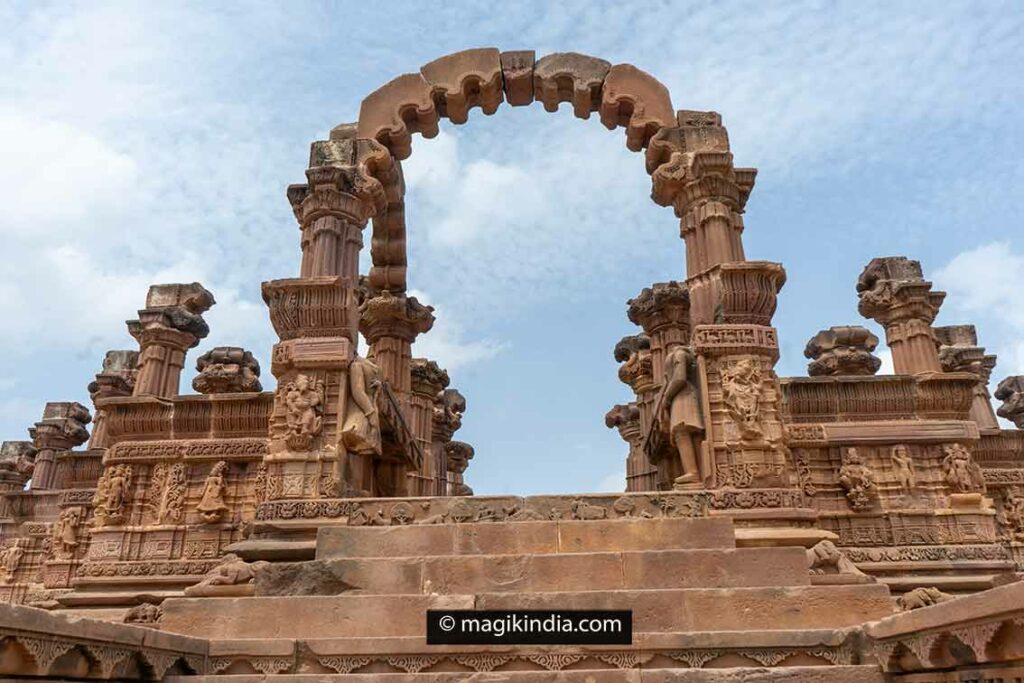
The Chhatardis of Bhuj were built in the 18th century by the rulers of the Jadeja dynasty. As Rajput architecture was strongly influenced by the Mughal style, we find elements of Islamic architecture such as jalis (openwork stone panels) or polylobed arches.
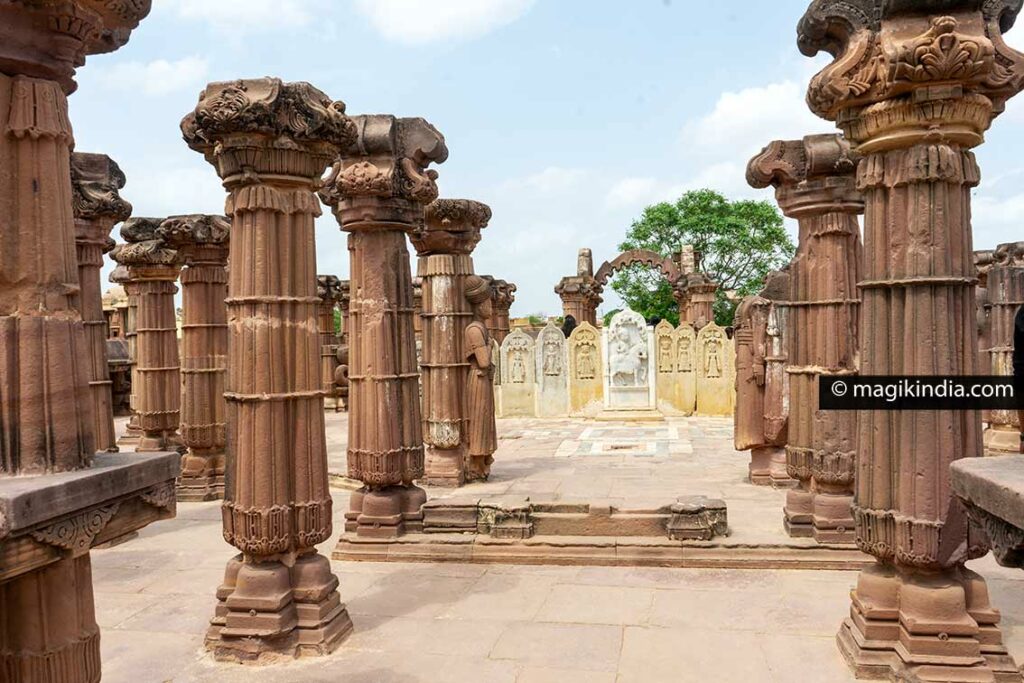
The site of the royal cenotaphs of Bhuj includes around thirty buildings, that of King Lakhpatji is the most important. During his reign (from 1741 to 1752 CE) this Jadeda sovereign surrounded himself with the best artists. This is how he called on Ram Singh Malam, a navigator, architect and craftsman to build the palace of Aina de Bhuj as well as its cenotaph. Ram Singh Salam having lived in Holland, he brought back to India various artistic and architectural influences which made his reputation.
The Lakhpatji cenotaph is designed like a temple, placed on a raised polygonal platform with two galleries. The exterior is richly carved with floral motifs and figures from everyday life such as dancers, musicians and courtesans.

The two entrances to the chhatardi are overlooked by a polylobed arch, flanked by two guardians.
A colonnaded avenue leads us directly to the heart of Chhatri where there is a representation of the Maharao on horseback surrounded on either side by his numerous wives.
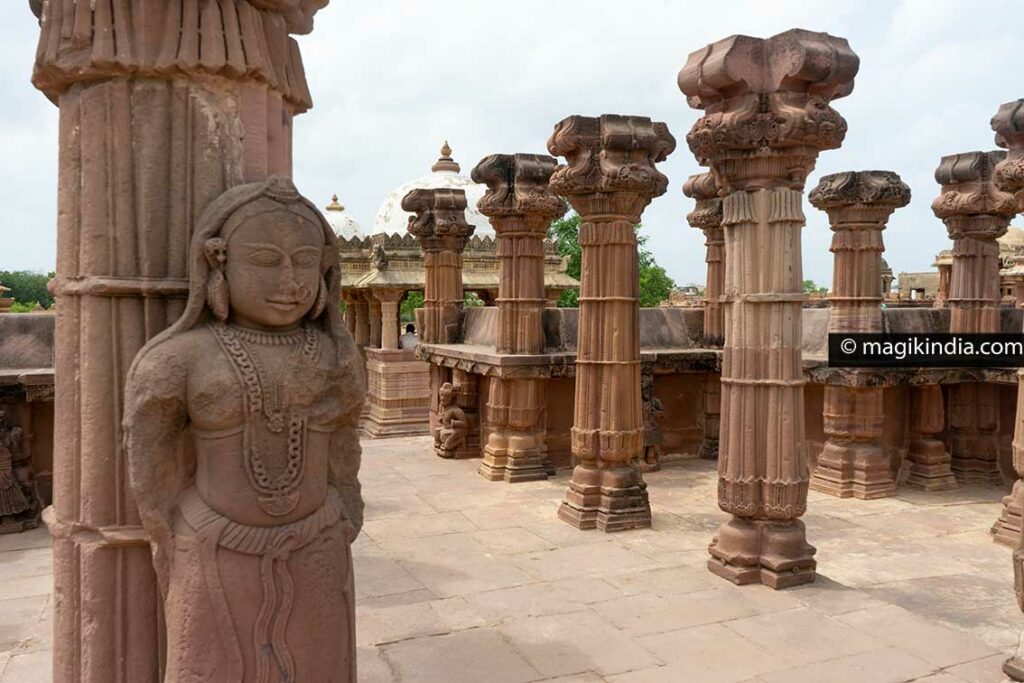
The center of the cenotaph is decorated with beautiful life-size statues of women and men carved on pillars. This is perhaps what is most impressive about this cenotaph. The characters present precise details on the fashion of dress and jewelry of this era, a real step back in time.
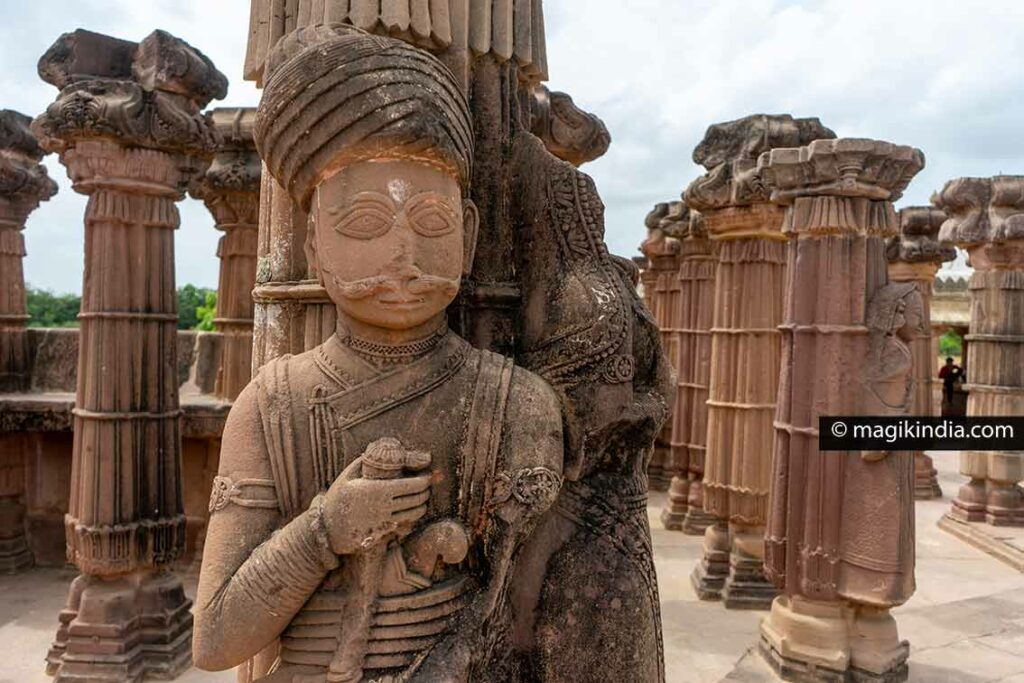
Other chhatardis on the site are worth a detour. Right next to that of Lakhpatji, you can admire a cenotaph topped with a dome with earthenware in blue tones, again influenced by Islamic architecture.
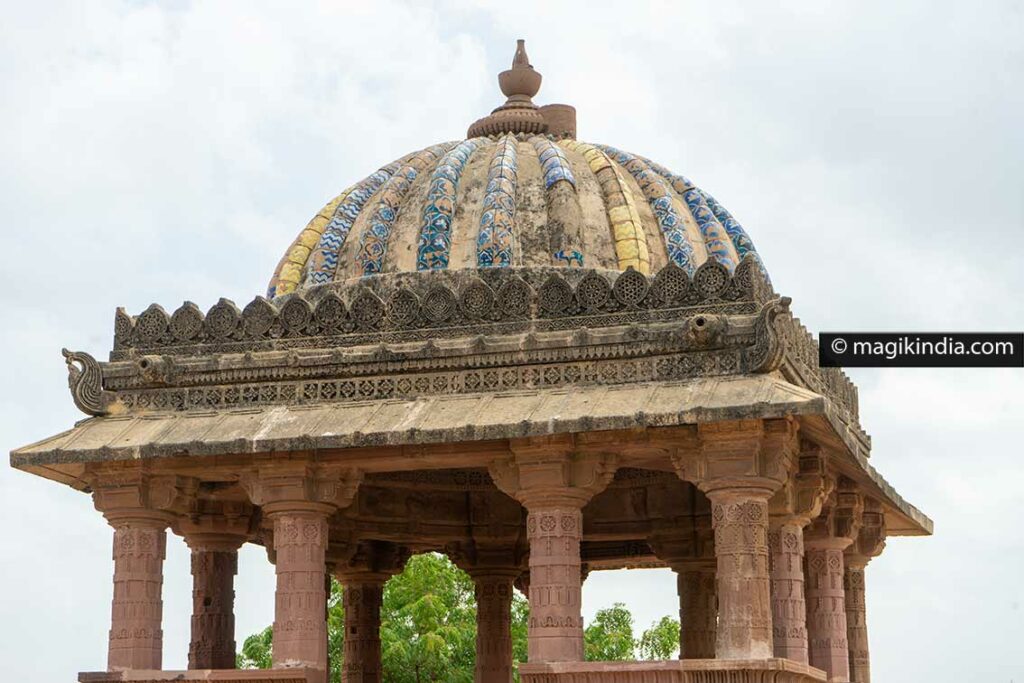
The Chhatardis of Desarji and Raydbanji II, currently being restored, are among the most elaborate on the site. They both feature fine stone screens embellished with floral motifs and figures.
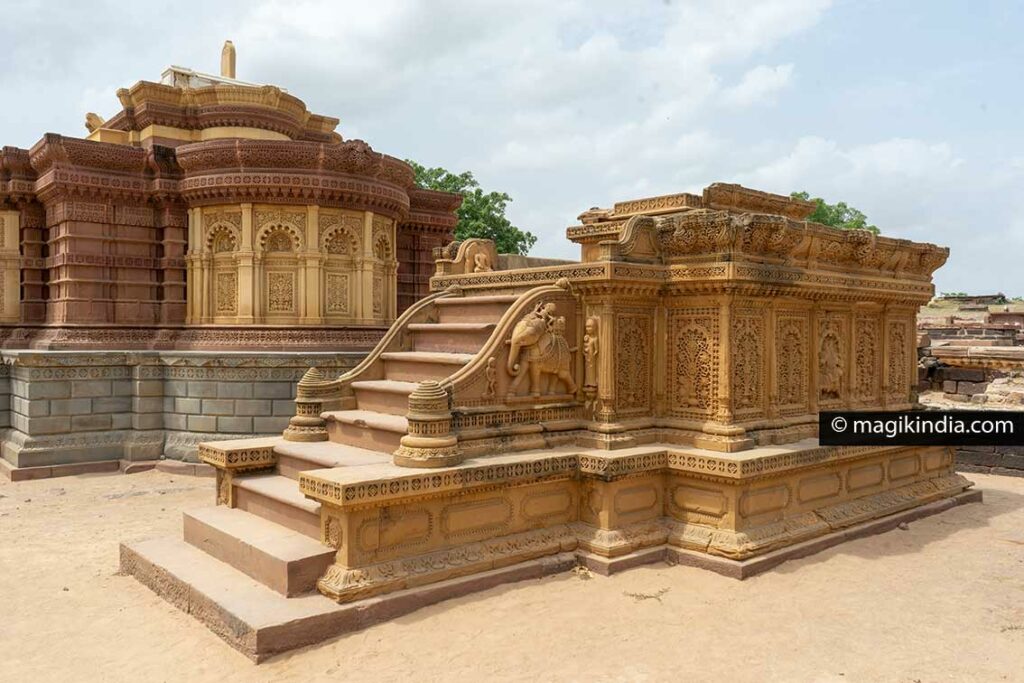
One of them is flanked by two elephants in relief on the exterior sides of its staircase. The movement of the elephant’s head is very realistic and seems to come out of the scene.

As you will have understood, this Chhataris site is a must in Bhuj! There is no sign indicating the place, insist a little with your guide or driver to take you there. You will not be disappointed!
Best seen at sunset when the red and ocher stone seems to ignite under the last rays of the day.
